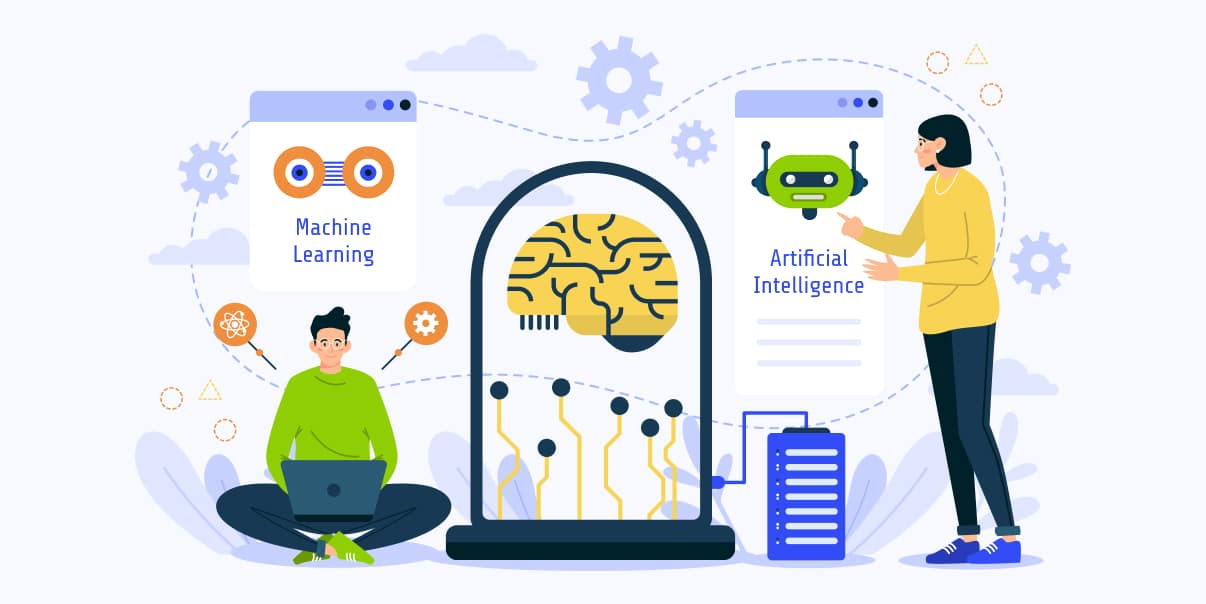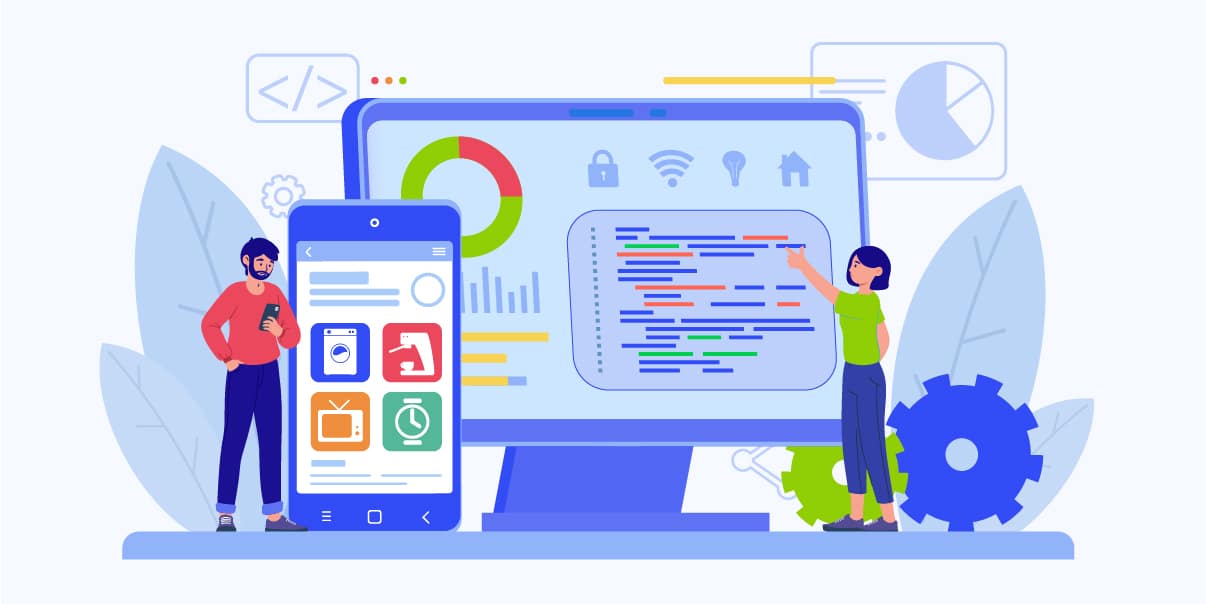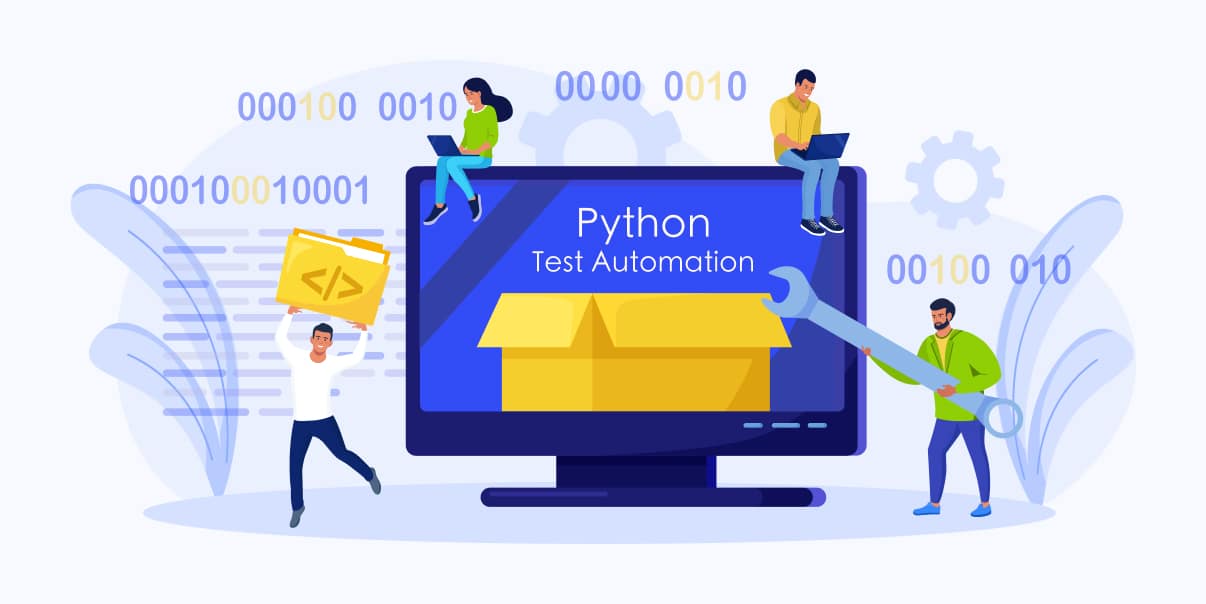Machine Learning vs. Artificial Intelligence: What’s the Difference?

Machine learning (ML) and artificial intelligence (AI) are the hottest topics in technology today, driving digital transformation. Still, many people don’t know the difference between them.
Machine learning (ML) and artificial intelligence (AI) are often used interchangeably. Still, these two have distinct differences. ML is a subset of AI that allows computers to learn from data. In contrast, AI is a broader term encompassing computer systems that simulate human intelligence. Understanding their differences is crucial to utilizing their capabilities effectively.
Let’s delve into the difference between artificial intelligence and machine learning.
Machine Learning (ML)
Machine learning models involve the development of algorithms and statistical models. These models can automatically identify patterns and relationships. For example, a machine learning algorithm can teach machines to see objects in images or understand natural language. Through training, machines can make predictions or decisions about new data.
Types of Machine Learning Algorithms
ML algorithms have three categories: supervised learning, unsupervised learning, and reinforcement learning. Here’s a quick overview of each machine learning model:
- Supervised learning algorithms involve training a model on past data and labeled data to make predictions on new, unseen data.
- Unsupervised learning algorithms involve finding patterns in unlabeled, semi-structured data. One example is clustering similar data points together.
- Reinforcement learning algorithms involve learning by trial and error. Learning happens through feedback about actions in a specific environment.
In the modern world, each machine learning model has several applications. Some of the ways people use algorithms may surprise you.
Examples of Machine Learning in Real-world Applications
Several applications and websites use machine learning. Here are some examples:
- Natural language processing (NLP) uses a variety of algorithms. These algorithms include supervised learning, unsupervised learning, and deep learning. The most famous examples of apps and websites that use NLP are Siri, Alexa, Grammarly, and Amazon.
- Image recognition uses artificial neural networks (ANNs). In particular, image recognition uses deep learning neural networks. Algorithms that use a neural network have succeeded in image recognition tasks. Self-driving cars use image recognition to identify and classify objects like other cars and traffic signs on the road.
- Recommendation systems use collaborative filtering algorithms. This algorithm uses the past behavior of users to recommend items to other users with similar preferences. The most famous examples are Netflix, YouTube, Spotify, and Amazon.
Next, let’s discuss Artificial Intelligence.
Artificial Intelligence (AI)
Artificial Intelligence (AI) is a computer science field focused on creating machines capable of complex tasks that usually require human intelligence. AI systems can recognize speech, understand natural language, and perform many other tasks that humans can do.
AI is an umbrella term for computer systems that simulate human behavior or mimic human intelligence. AI can solve problems, make decisions, and learn from experience.
Types of Artificial Intelligence
There are three broad types of AI based on their level of intelligence and autonomy:
1. Narrow or Weak AI
Narrow or weak AI is a type of AI that focuses on solving specific tasks or problems within a limited domain. Narrow AI uses learning algorithms to analyze data and make decisions or predictions accordingly.
Narrow AI is currently the most common form of AI in various industries.
2. General or Strong AI
General or strong AI can perform any intellectual task that humans can do, with the same level of intelligence and flexibility. Unlike narrow AI, which is designed for specific tasks, general AI can understand, learn, and adapt to any job. It’s capable of simulating human behavior and intelligence.
General AI is currently an active area of research. Once developed, general AI may potentially displace human workers in many industries.
3. Superintelligence
Superintelligence is the next level of AI, which goes beyond the capabilities of human intellect. Superintelligent AI could perform any task and emulate the human brain.
At present, superintelligence is only theoretical. In the future, superintelligent AI can do tasks beyond human understanding or comprehension.
Examples of Artificial Intelligence in Real-World Applications
Artificial intelligence appears in various scenarios in the real world. Here are some examples:
- Robotics uses an AI system to power sensors and cameras. With this system, robots can perceive their environment and plan and control their movements.
- Diagnostic tools use an AI system to analyze significant amounts of medical data quickly and accurately. These tools recognize patterns, identify abnormalities, and make more accurate diagnoses.
- Self-driving cars use an artificial intelligence system. The system allows a vehicle to perceive its environment, make decisions, and control its movements. Apart from image recognition, these cars use non-machine learning techniques, too. These techniques are sensor fusion, rule-based systems, and path planning.
Differences between Machine Learning and Artificial Intelligence
So, what is the difference between artificial intelligence and machine learning? Keep reading to learn more about AI vs. machine learning!
Machine learning is a subset of artificial intelligence.
Artificial intelligence encompasses various fields, and machine learning is one of its specific applications. ML enables machines to learn and improve from experience without being explicitly programmed. In contrast, AI is a broad field that encompasses other technologies.
Machine learning focuses on the development of algorithms to learn from data.
AI encompasses a lot of applications. On the other hand, ML focuses on using training algorithms on large datasets. ML creates intelligent machines capable of making predictions or decisions based on new data.
Artificial intelligence tries to make machines perform tasks that typically require human intelligence.
AI has a broader goal: doing tasks that people usually do. ML has a more specific target: making predictions and decisions. As such, ML is more focused on solving particular problems.
To put it simply, ML is one piece of the puzzle, while AI is the entire puzzle. Together, ML and AI form a comprehensive approach to solving problems and doing tasks.
Relationship Between Machine Learning and Artificial Intelligence
Machine learning is only a small part of artificial intelligence but an essential one. Here’s how artificial intelligence and machine learning relate to each other:
Machine learning is an essential tool in the development of artificial intelligence.
ML is essential to AI because it enables machines to learn from data. By doing so, devices can improve their performance without explicit programming. As such, AI systems can adapt to new situations and solve complex problems that would otherwise be too difficult for humans to analyze.
Furthermore, machine learning can automate tasks that need accuracy and precision. ML enables AI to analyze complex data sets that humans cannot process.
Artificial intelligence can improve machine learning algorithms.
There are several non-ML techniques in the field of AI to improve ML. These techniques include expert systems, fuzzy logic, genetic algorithms, swarm intelligence, and rule-based systems.
The two fields complement each other and are essential to advancing technology.
Machine learning helps improve AI research. On the other hand, AI’s other techniques help develop machine learning.
Conclusion
As we can see, AI and machine learning models are closely connected. Together, the two fields have huge potential. AI will play an invisible but essential role in our everyday lives someday. Superintelligence may become a reality, and we may rely on it for everything.
AI and ML have already transformed the way we work, live, and interact with technology. As we continue to develop AI, we must understand the distinctions and relationships between AI and ML to harness their full potential.
We’re BIT Studios!
At BIT Studios we specialize in designing, building, shipping, and scaling beautiful, usable products with blazing-fast efficiency



